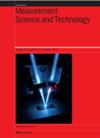多信息引导下的弱监督医学影像配准
IF 3.4
3区 工程技术
Q1 ENGINEERING, MULTIDISCIPLINARY
引用次数: 0
摘要
近年来,基于深度学习的配准方法因其优越的实时性受到学者们的广泛关注。大部分工作直接使用卷积神经网络将待配准图像映射到变换空间。然而,卷积神经网络的感受野有限,需要多层卷积叠加才能获得相对较大的感受野。基于变换器的方法可以通过注意机制更好地表达空间关系。然而,自注意机制和多头机制使得每个小块都会计算与其他小块的关系,而不受距离的限制。由于医学图像中对应体素点的移动范围有限,这种长距离依赖性可能会导致模型受到长距离体素的干扰。本文将对应体素点的空间变换转换为基本矢量基础的计算,提出了 SV 基础模块,并设计了两阶段多尺度配准模型。我们在大脑和肺部数据集上进行了实验,证明了所提出的配准方法的有效性和通用性。根据医学图像的解剖学特征,设计了相应的损失函数,将掩膜信息引入到配准任务中。实验结果表明,所提出的方法可以准确地配准大脑和肺部图像。本文章由计算机程序翻译,如有差异,请以英文原文为准。
Weakly supervised medical image registration with multi-information guidance
In recent years, the registration method based on deep learning has received extensive attention from scholars due to its superiority in real-time performance. Most of the work directly use convolutional neural networks to map the image to be registered into the transform space. However, the receptive field of convolutional neural networks is limited, and multi-layer convolution superposition is needed to obtain a relatively large receptive field. Transformer-based methods can better express spatial relationships through attention mechanisms. However, the self-attention and the multi-head mechanisms make each small block calculate the relationship with other small blocks regardless of distance. Due to the limited moving range of corresponding voxel points in the medical images, this long-distance dependence may cause the model to be interfered by long-distance voxels. In this paper, we convert the spatial transformation of the corresponding voxel points into the calculation of the basic vector basis to propose the SV-basis module and design a two-stage multi-scale registration model. Experiments are carried out on brain and lung datasets to prove the effectiveness and universality of the proposed registration method. According to the anatomical characteristics of medical images, the corresponding loss function is designed to introduce mask information into the registration task. The experimental results show that the proposed method can accurately register brain and lung images.
求助全文
通过发布文献求助,成功后即可免费获取论文全文。
去求助
来源期刊

Measurement Science and Technology
工程技术-工程:综合
CiteScore
4.30
自引率
16.70%
发文量
656
审稿时长
4.9 months
期刊介绍:
Measurement Science and Technology publishes articles on new measurement techniques and associated instrumentation. Papers that describe experiments must represent an advance in measurement science or measurement technique rather than the application of established experimental technique. Bearing in mind the multidisciplinary nature of the journal, authors must provide an introduction to their work that makes clear the novelty, significance, broader relevance of their work in a measurement context and relevance to the readership of Measurement Science and Technology. All submitted articles should contain consideration of the uncertainty, precision and/or accuracy of the measurements presented.
Subject coverage includes the theory, practice and application of measurement in physics, chemistry, engineering and the environmental and life sciences from inception to commercial exploitation. Publications in the journal should emphasize the novelty of reported methods, characterize them and demonstrate their performance using examples or applications.
 求助内容:
求助内容: 应助结果提醒方式:
应助结果提醒方式:


